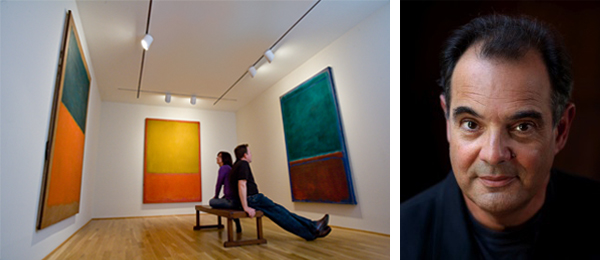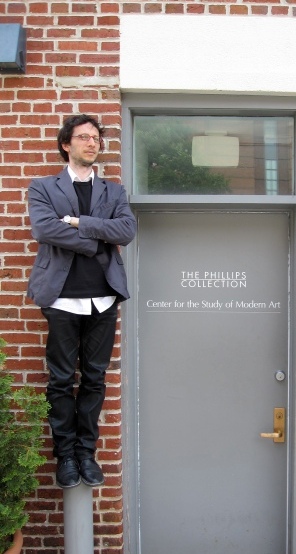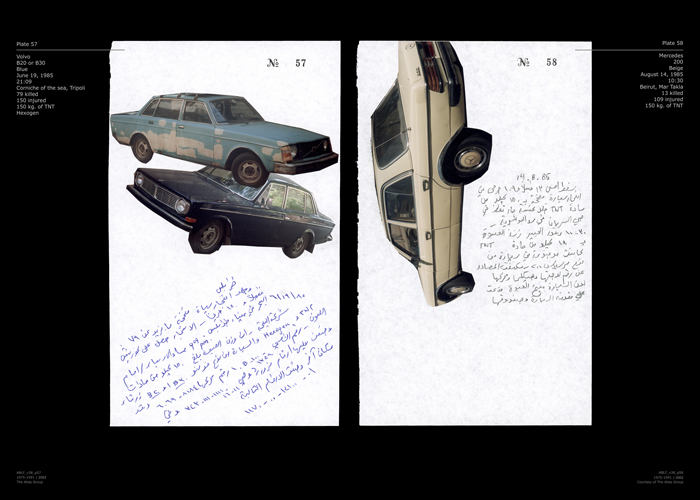Actor Edward Gero is blogging about his process of preparing for the role of Mark Rothko in John Logan’s Red, which opens at Chicago’s Goodman Theatre in September and then here in town at Arena Stage early next year. Here, Gero shares his experience of our Rothko Room and discussion with Rothko-expert and Curator at Large Klaus Ottmann. Follow the rest of his journey as it unfolds.

(left) The Rothko Room at The Phillips Collection. Photo: Max Hirshfeld. (right) Actor Edward Gero. Photo: Scott Suchman
I still am not sure what happened today. I can tell you the narrative, but I am not sure what the effect of the event is yet. Today I went to meet the new Curator at Large of The Phillips Collection, Klaus Ottmann, who was gracious enough to spend a few hours with me in the Rothko Room and at lunch talking about the artist and his art. I came early, not knowing what to expect, but very excited to spend my first time in the first of the “Rothko Rooms.” It was installed in The Phillips Collection in 1960. The room and the four paintings were the first room ever dedicated to a single artist, which has become commonplace now, but at the time was quite the acknowledgment of Rothko. Rothko himself consulted with the museum about the space, chose the bench for the space, and saw it completed. It is the only room he did see, unlike the much larger Rothko Chapel. He committed suicide before that project’s completion.
I was too excited to wait in the cafè, so I went immediately upstairs to the room. I entered a very small space with off-white walls, four large canvasses, dim lights, and a simple wooden bench in the center. It was very theatrical. The lighting made for a hushed environment, like entering a meditation room. The paintings were large and imposing, dominating the space.
Having read that Rothko hoped that one would spend time with the paintings, I sat down quietly and hoped that the room and the works would start acting on me. They did. Continue reading


